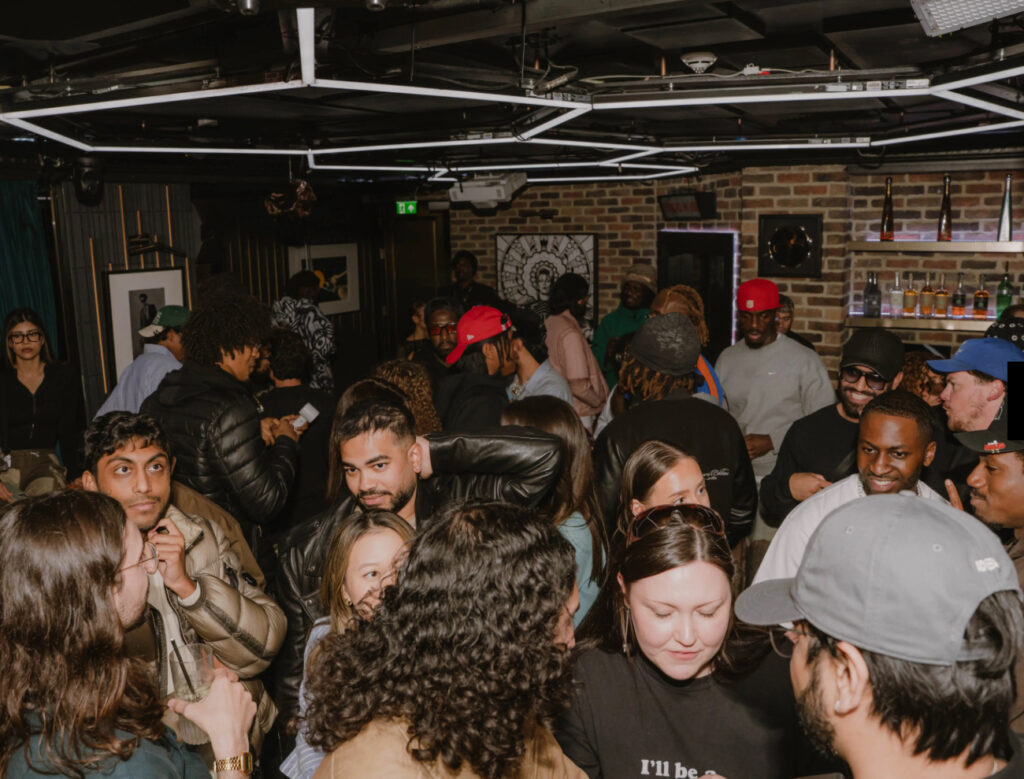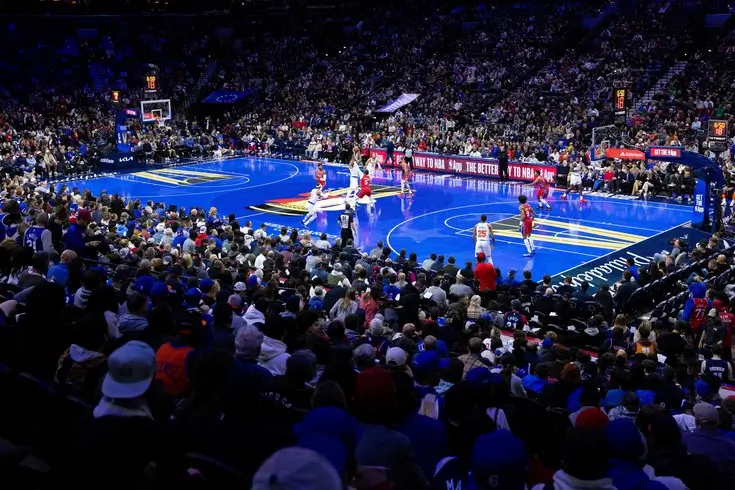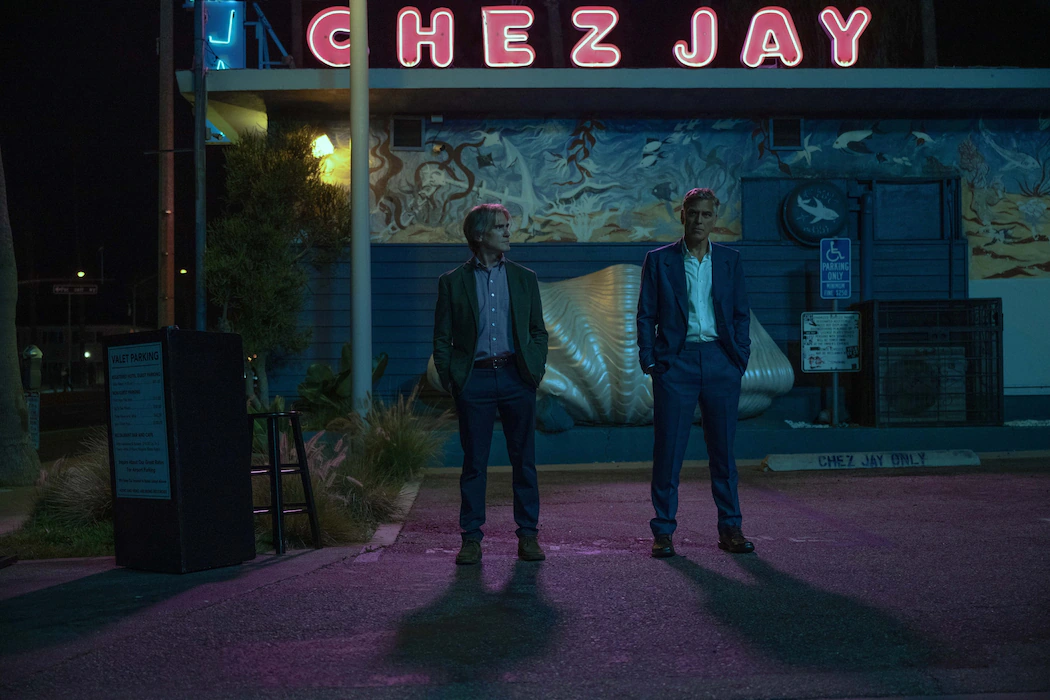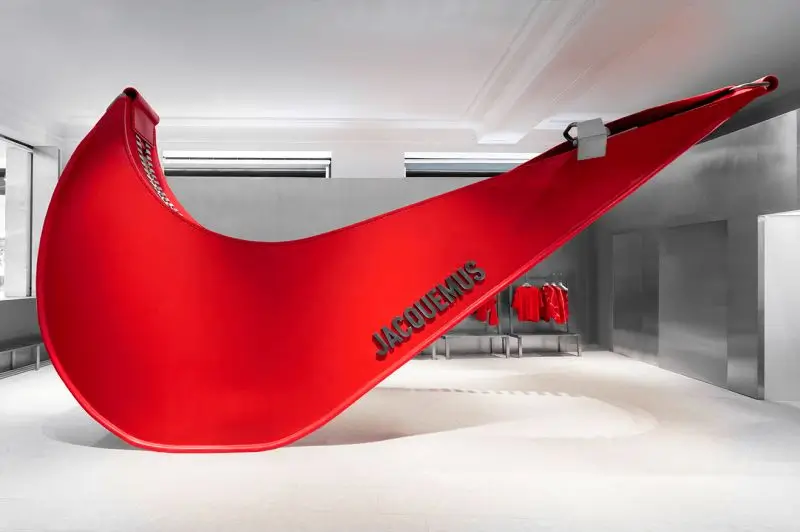
In a fashion landscape oversaturated with static product listings, predictable drops, and app fatigue, Tilt emerges not as just another e-commerce platform but as an experiment in kinetic engagement. Part TikTok, part Grailed, part underground style market, Tilt is the brainchild of ex-Revolut minds Neil Shah and Abhi Thanendran—a hybrid app designed to merge the excitement of social media with the depth and nuance of fashion reselling. It’s commerce as performance. Shopping as live culture. And this week in London, Tilt kicked off a bold new chapter in its playbook: Tilt Treasures, a live auction event series celebrating heritage fashion through community-driven, real-time bidding.
Held at Little Tape in Mayfair, a private venue known for hosting intimate tastemaker gatherings, the inaugural Tilt Treasures event focused on a single legendary silhouette: The North Face Mountain Jacket. Now four decades into its life, the Mountain Jacket remains one of the most enduring pieces in technical outerwear—equal parts alpine armor and streetwear icon. Tilt chose this jacket not only for its cultural weight, but for what it represents: a fashion object with utility roots that has shape-shifted into a canvas for artists, collaborators, and style historians.
The live auction format—hosted by charismatic fashion archivist Dnieccio and soundtracked by Jamo Beatz—felt like part Sotheby’s, part underground party. Ten different iterations of the jacket were on offer, each a curated slice of fashion history. The lineup included ultra-rare collaborations like The North Face x Supreme 2016 Steep Tech, The North Face x KAWS 2022 capsule, and even a bespoke, hand-painted version by British artist Tomas Gittins, whose signature blend of abstract texture and street iconography gave the jacket a one-of-one museum-grade feel. It wasn’t a drop. It was a moment.
From Tap to Treasure: The App’s Social DNA
Tilt was never meant to be a traditional resale app. Built on the spine of live, shoppable video, it’s a space where resellers function more like streamers or stylists than anonymous vendors. Every seller has a voice, a face, and a curated vibe. Think of it as the lovechild of QVC and Depop, filtered through TikTok’s algorithmic fluidity. A seller might go live from a bedroom closet, flipping through Supreme tees, or host a full-on fit check session while viewers bid in real-time via screen overlays. It’s interactive, immediate, and—most importantly—community-first.
This approach plays perfectly into Gen Z’s behavioral patterns. Static photos and endless scrolling now feel sterile compared to live, conversational commerce. Tilt is built for those who grew up watching haul videos, engaging with influencers in comment sections, and turning even mundane purchases into aesthetic rituals. Every listing becomes part of a broader narrative. Every drop becomes a performance.
But what sets Tilt apart isn’t just its interface—it’s its ethos. The founders see the app not just as a commercial platform, but as a cultural marketplace. Here, resellers are archivists. Buyers are collectors. Drops aren’t just about quantity—they’re about context.
The North Face: An Object Worthy of Ritual
Choosing the Mountain Jacket for the first Tilt Treasures was no accident. Originally introduced in 1985, the jacket was conceived for mountaineering expeditions—fortified with Gore-Tex, double-layer storm flaps, and alpine-precise construction. But over the past 40 years, it has shape-shifted into something far more layered: a symbol of urban resilience, a staple of both underground subcultures and high-fashion hybrids, and a ready canvas for collaboration.
Tilt’s live auction format lent each jacket its own gravity. There was no conveyor-belt pace. Each piece was introduced with story, context, and styling suggestions—whether it was a neon-splashed vintage piece sourced from a Tokyo flea market or a KAWS collab that blurred the line between technical apparel and wearable sculpture. In many ways, the auction felt closer to a museum happening than a typical sale. The crowd—resellers, collectors, stylists, and hype historians—were there not just to buy, but to witness.
Tomas Gittins’ one-of-one jacket, unveiled mid-evening under a spotlight, stood as the event’s apex. Gittins, known for his layered, almost geological approach to paint, had treated the jacket like a canvas, embedding motifs that nodded to street signage, protest iconography, and aerial maps. The bidding spiraled quickly, drawing cheers from a crowd more used to silent screen swipes than public competition. The final bid? Unannounced. But it wasn’t about the number—it was about the culture.
Rewriting Resale’s Script
Resale in fashion has long wrestled with a paradox. On one hand, it’s fueled by narrative—by origin stories, rarity, and legacy. On the other, it’s too often reduced to apps and transactions. Tilt’s innovation is not just technological but ritualistic. By turning drops into spectacles and objects into characters, the app returns the emotional charge to buying. Resale becomes less about liquidation and more about legacy.
The auction format also inverts the traditional power dynamic between buyer and seller. Instead of silently clicking “buy now,” attendees must declare their intent, assert their stake, and participate in a shared social economy. Every bid becomes part of a collective rhythm. Every item sold becomes a story retold.
And yet, Tilt doesn’t reject technology. It reconfigures it. The app’s design is clean but kinetic—customizable storefronts, algorithmic feed curation, integrated live chat, and drop scheduling tools allow sellers to create mini-brands within the Tilt universe. But where other platforms use tech to flatten the experience, Tilt uses it to amplify presence.
The Community Effect
The other secret to Tilt’s appeal? The people who use it. From rising resellers with encyclopedic knowledge of 2000s denim to stylists curating archive Raf or Prada Sport, the community thrives on aesthetic cross-pollination. One night you might tune in to a seller auctioning early BAPE, the next it might be avant-garde Comme des Garçons or niche 2010s Tumblr-core. There is no fixed identity—only shared momentum.
The live events serve as crystallizations of this energy. At Little Tape, you didn’t just see the jackets—you saw them styled, discussed, deconstructed. Conversations flowed about Gore-Tex sourcing, archive condition ratings, and the ethics of resale. This wasn’t hype for hype’s sake. It was education in motion.
Tilt Treasures promises to become a recurring series, each event focusing on a different cornerstone of fashion history. The next might center around vintage Helmut Lang, or early Nike ACG, or forgotten Maison Margiela replicas. Each will function as both auction and archive—a way to slow down fashion’s relentless turnover and rediscover what made these pieces matter in the first place.
Final Stitch: Tilt as Culture Engine
In 2025, platforms that merely list products won’t survive. Gen Z doesn’t just want access—they want immersion. They want backstories, performance, emotion, texture. Tilt understands this. It’s not just hosting auctions—it’s orchestrating culture.
The success of the first Tilt Treasures event proves that fashion’s future won’t be written by brands alone. It will be shaped by communities who collect, remix, and reframe fashion’s past into new formats. Tilt isn’t trying to become the next Depop or StockX. It’s trying to become the first of something else entirely—a living, breathing, hybrid commerce community that treats resale not as transaction but transformation.
And in London, on a spring night charged with legacy and leather and basslines, that transformation was already in motion.
No comments yet.








